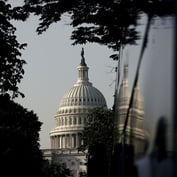What You Need to Know
- The IRS is delaying, until 2026, a rule mandating that catch-up contributions for certain high-income taxpayers be treated as Roth contributions.
- A $145,000 income threshold, indexed for inflation, is not tied to existing definitions of highly compensated employees.
- Starting in 2025, a separate catch-up contribution will be permitted for taxpayers between 60 and 63 years old.
The Internal Revenue Service has offered a two-year delay for the Setting Every Community Up for Retirement Enhancement (Secure) 2.0 Act’s mandate that all catch-up contributions for certain high-income taxpayers be treated as Roth contributions.
Still, many plan sponsors and participants have been wondering about the details that will determine how the rule is implemented in practice.
In the same guidance that delayed the formal effective date of the Roth catch-up mandate, the IRS answered some pressing questions — and acknowledged that additional questions remain to be answered in forthcoming guidance.
Secure 2.0 & Catch-Up Contributions: The Basics
For company-sponsored retirement plans, including 401(k)s and 403(b) plans, the catch-up contribution limit is $7,500 in 2023. Starting in 2025, a separate catch-up contribution is permitted for taxpayers who are between ages 60 and 63. That contribution limit will be equal to the greater of (1) $10,000 or (2) 150% of the standard catch-up contribution limit for 2024. The $10,000 limit will also be indexed for inflation. Once the taxpayer turns 64, the standard catch-up contribution limit applies.
Starting in 2026, after the two-year IRS delay, if a taxpayer has income of at least $145,000 for the prior year, the catch-up contribution for the subsequent year must be treated as a Roth contribution. That means these funds are contributed with after-tax dollars, so they will not reduce current taxable income but can be withdrawn tax-free in the future. The $145,000 amount will also be indexed for inflation.
The $145,000 threshold is new and is not tied to existing definitions of highly compensated employees. That amount is also tied to W-2 income, so if an S corporation owner takes $130,000 in compensation but also receives additional profits from the corporation, the owner will not have crossed the $145,000 threshold to trigger the Roth contribution rule.












 Copyright © 2024 ALM Global, LLC. All Rights Reserved.
Copyright © 2024 ALM Global, LLC. All Rights Reserved.